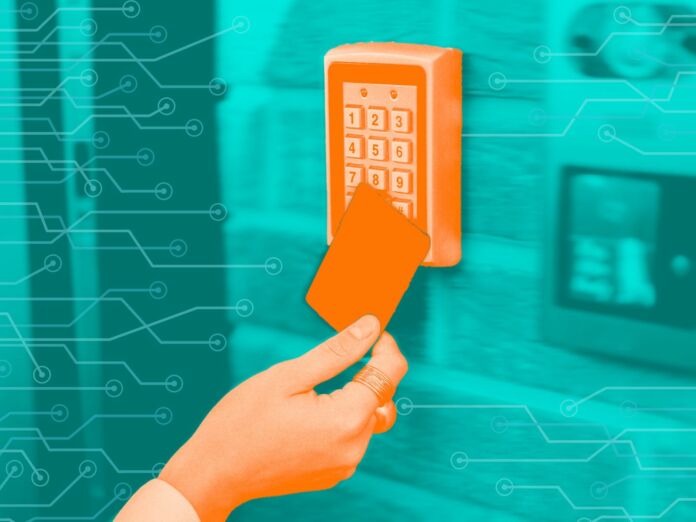
ButterflyMX – August 2, 2024
Collected at: https://www.iotforall.com/how-iot-improves-property-management
Property management is significantly improving thanks to the implementing of the Internet of Things (IoT). This technology can automate tasks, improve efficiency, and enrich the tenants’ experience. But how exactly is IoT implemented within the property management field?
Let’s discuss how property managers and their staff are utilizing IoT across their properties. Plus, see some real-world examples of buildings leading the charge in IoT applications.
Key Applications of IoT in Property Management
Here are the primary ways IoT is making an impact on how properties are managed and operated:
Better Security
Security is a top priority for property managers, and IoT offers numerous advantages in this area. For example, security cameras, smart locks, and alarm systems give managers greater insight into property operations and enable remote access. Using these functions, operators can monitor multiple locations from a single dashboard, receiving instant alerts in case of suspicious activity.
Meanwhile, an access control system — like the one offered by ButterflyMX — allows for seamless entry management. Residents can use their smartphones to gain access, eliminating the need for physical keys and reducing the risk of unauthorized entry. These systems also integrate with other building management systems, providing a comprehensive and centralized security platform.
Sustainability
One of the primary ways IoT enhances property management is through optimized energy usage. HVAC systems can be programmed to adjust temperatures based on occupancy and usage patterns.
For instance, sensors detect when a room is unoccupied and automatically reduce heating or cooling, reducing unnecessary energy consumption. This not only saves money but also contributes to a more sustainable environment.
Property operators can also monitor energy usage through IoT-enabled systems, allowing for immediate adjustments and long-term strategic planning. As a result, owners and managers ensure their buildings operate efficiently while minimizing energy waste.
Building Environment Monitoring
IoT devices are important for environmental monitoring, ensuring the safety and comfort of building occupants. Sensors detect changes in air quality, humidity, and temperature, providing data that helps maintain optimal living and working conditions.
For example, if a sensor detects high levels of moisture in an amenity space, the HVAC system can adjust to minimize moisture and increase comfortability.
Therefore, continuous monitoring helps prevent potential health hazards and maintains a comfortable environment for tenants. Not to mention, by using this technology to identify and address issues early, property managers can avoid costly repairs while complying with health and safety standards.
Efficient Maintenance
IoT streamlines and improves the experience of maintaining properties. As such, predictive maintenance, enabled by IoT sensors, helps identify potential issues before they become major problems. So, sensors on an air conditioning unit can detect unusual vibrations or temperature changes immediately, indicating a need for service.
Overall, predictive maintenance reduces the downtime of equipment, which improves the comfortability of tenants. In addition, predictive maintenance reduces repair costs by identifying problems before they get serious. And with fewer major repairs, equipment will last longer.
Comfort and Convenience
Ultimately, IoT in property management aims to improve comfort and convenience for building occupants, from owners and staff to residents and service providers. The Internet of Things has made strides in this area through many of the aforementioned applications and in-home smart devices.
Devices such as voice assistants, smart lighting, and automated blinds create a more comfortable and customizable living environment. Residents can control various aspects of their apartments through their smartphones or voice commands, making their daily lives more convenient.
Not to mention, a mobile-based access control system enables residents to enter the property using their smartphones and even let in their guests remotely.
IoT also facilitates seamless communication between residents and property managers. Through mobile apps, tenants can report issues, request services, and receive updates, ensuring a smooth and responsive management experience.
Real-World Examples of IoT in Property Management
The impact of IoT in property management is best illustrated through real-world examples:
The Edge in Amsterdam
The Edge is a well-known smart building in Amsterdam, often cited as one of the smartest buildings in the world. Through its 28,000 IoT sensors, the building helps regulate a variety of operations, such as circulating hot and cold water through pipes to maintain indoor temperatures.
More importantly, The Edge is a LEED Platinum Certified building, meaning it’s been recognized by the U.S. Green Building Council for its high standards in environmental sustainability.
Microsoft Headquarters in Redmond, WA
Microsoft’s Redmond campus is undergoing major modernization that extensively incorporates IoT devices to better the work environments for employees. For instance, the campus showcases Microsoft’s Azure Digital Twins, which creates a digital model of the campus and uses real-time data from IoT devices to manage comfort and usage better.
The Crystal in London
Initiated by Siemens, The Crystal is a sustainable building designed to showcase urban sustainability solutions and technologies. By using ground-source heat pumps and solar panels, it reduces energy consumption by 42 percent. It’s also equipped with a state-of-the-art building management system, allowing it to monitor and optimize energy and water usage throughout the building.

Leave a Reply